- R.A
- HandiCrafts
- 16929 views
- 24 comments
Backgammon is one of the oldest board games, dating back to 3000 BC. It is a game of chance and strategy and is famous worldwide. In this comprehensive article, we will introduce backgammon rules and setup. We teach you how to set up a backgammon board, the object of the backgammon, and the main rules of this Entertaining board game.
How Many Backgammon Pieces?
Backgammon pieces and their details are not complicated; pay attention to the following sentences. It is played by two players with fifteen pieces (checkers) of the same color. In other words, backgammon pieces contain fifteen white checkers plus fifteen black checkers.
Also, each player has their own pair of dice. A double cube with the numbers 2, 4, 8, 16, 32, and 64 is used to track round stocks.
Backgammon Board Layout
The Backgammon board layout consists of 24 long triangles called dots or points. The triangles mostly alternate in color (in the below picture, they have the same color) and are divided into four quadrants of six triangles.
The four quarters are the player's home board and outboard and the opponent's home board and outboard. A divider separates home boards and outboards in the middle of the backgammon board layout.
The initial positions of the parts are arranged as shown below. Points range from 24 on the opponent's home board to 1 on the player's board.
The game's object is to move all your pieces to the board and then remove (destroy) the pieces entirely from the board. As shown, players move their backgammon pieces in opposite directions, following a horseshoe-shaped path.
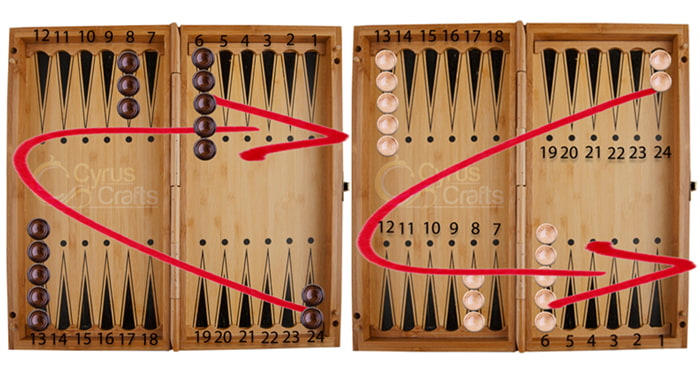
Backgammon Setup
After the backgammon board layout item, how to set up the board is the first thing you need to know to play the game.
- Understanding the overall layout. We explained this in the previous section.
- Each player must take 15 pieces.
- Put two checkers on your 24-point board.
- Setup for backgammon board 13-point with five checkers.
- Position 3 checkers on 8-point.
- Set up the board with the 5 remaining checkers on 6-point.
- Ensure that no checkers overlap.
After all of these in setup for the backgammon board, you are getting ready for starting position and being a winner.
Cyrus Crafts; Luxury & Unique Products
Backgammon Rules of Starting Position
Backgammon rules are easy. To starting position, each player rolls a dice, and the player with the higher number moves first using both dice numbers.
You may ask, what should be done when both players roll the same number? If both players roll the same number, the dice are rolled again until they roll different numbers.
Players then take turns rolling two dice at the beginning of each round. Dice must always stack together and lie flat on the right side of the board. If they hit the outside or die, the dice must be re-rolled.
Getting Started: How to Play Backgammon?
The dice determine how many numbers the player is going to move. The seeker always follows the horseshoe path to the player's board.
Moves of Backgammon Pieces
A point that is not occupied by two or more opposing pieces is an open point. When moving, a piece in the backgammon may only be placed in one open dot.
Two dice forms have two separate moves.
- For example, if a player rolled a 6 and a 4, he might move one piece 6 spaces to an open triangle and another piece 4 spaces to an open point.
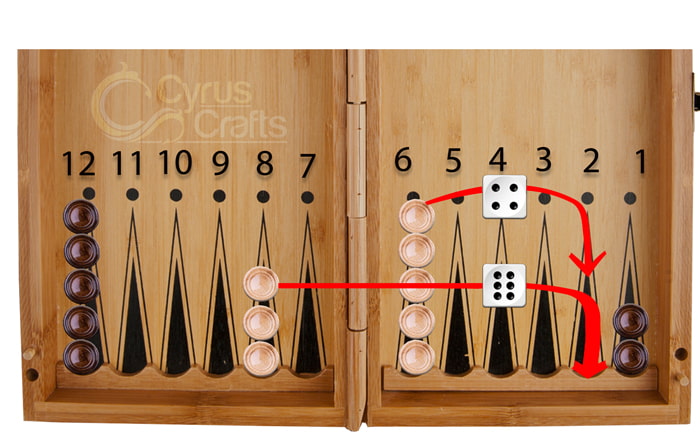
- A player may also choose to move the same piece twice, as long as each move leads to an open point.
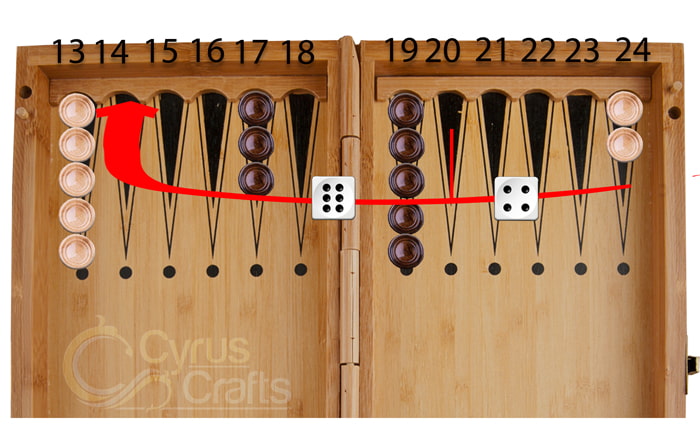
When paired, the numbers on the dice are played twice. For example, if a player lands a pair of fives, he may move his checkers four times of 5 in any combination on open points.
The player must move both the rolled numbers if possible (if they roll four numbers). Suppose only one of the numbers is playable because only one open point is available. In that case, the player must play that number. If either number can be played but not both, the larger number must be played. The player loses his turn if neither of the two numbers is playable. If a player cannot play all four numbers in a pair, the player must play as many numbers as possible.
Hitting and Entering of Checkers
Hitting and entering checkers in the backgammon setting has special conditions that you must be careful about during the game so as not to allow your opponent to hit your checkers and take them out of the game.
Hitting Checkers
An open dot that includes an opposing piece is a weakness. In this case, the opposite piece is hit, and the opposite piece that was hit is placed on the bar.
Entering Checkers
When a player has one or more pieces in the bar, he must first re-enter them on his opponent's home board. A piece is entered by rolling two dice and moving it to the spot corresponding to one of the numbers on the opponent's home board.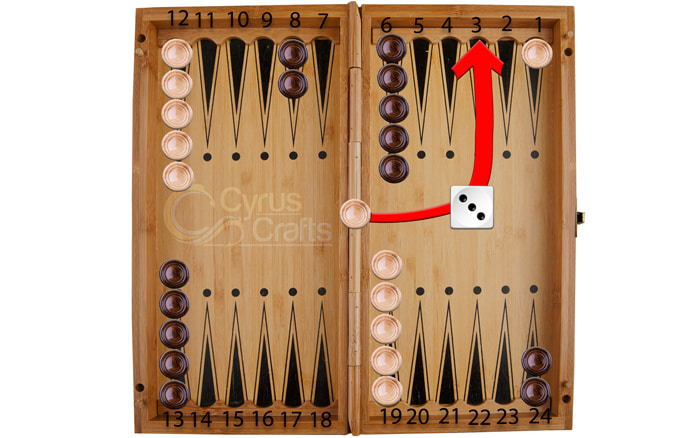
If the backgammon pieces on the rod fail to enter an open spot, the player loses their turn, and the piece(s) remain on the rod. A player cannot move another piece until all of his pieces are off the bar. If a player manages to get some of his pieces in but still has a piece on the bar, his turn is over.
Bearing Off in the Backgammon Setup
Backgammon bearing off is not complicated When all of a player's pieces are on his home board, he can begin the process of removing them. This is done with the dice number corresponding to a point with dice on it.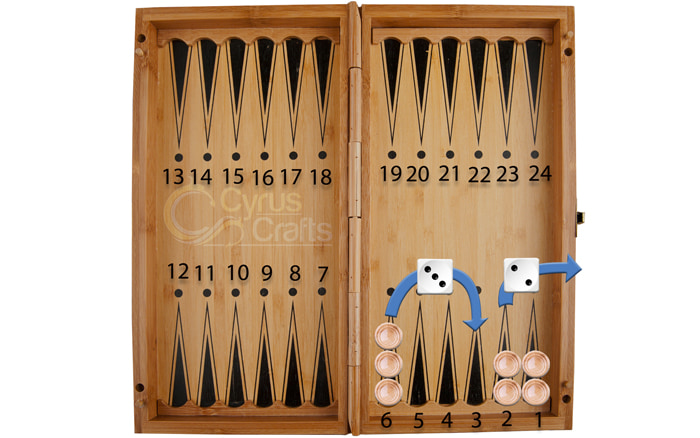
If a player cannot remove a piece, he must play with pieces from the previous dots.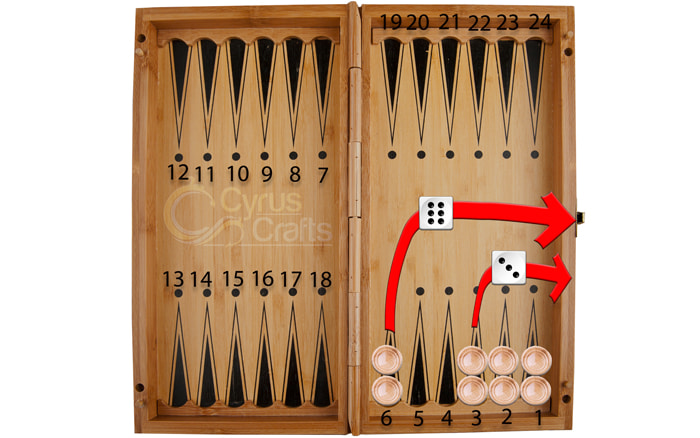
Doubling Cube in the Backgammon Set Up
If we want to describe the double, it should be said that the double cube is exactly like a knife or a gun, which is placed in the bar and between two players. Both players can use this deadly tool at any time in the game. But this weapon can kill the opponent and can harm the player himself. You should also know that a person or a player can use this weapon if he has access to it.
When Can You Use a Double Cube?
Be careful that you must place between the double cube two players or on your side so you can use it. If you give this cube to the opponent, it means that you have given the knife to the opponent, and you have to wait for the opponent to use it against you at any moment.
Double cube in the backgammon set up raises the stake at any point in the game. At the beginning of the game, the double cube with 64 is placed face up on the bar. Before starting a player's turn, that player may propose to double the current stake. The opponent either accepts (takes) double stakes or resigns (gives up) and loses the match and current stakes.
If the opponent captures, he owns the cube, and we turn the cube so that 2 is facing up. After that, only the cube owner has the right to propose to double the stake again. If the opponent captures, the ownership of the cube is transferred to him, and this process can continue from 4 to 8 and beyond. There is no limit to doubling; even the maximum number in the cube is 64.
Endings of The Backgammon Game
In every game, a winner and a loser must be determined. The object of the backgammon game is in three ways, and points are scored.
In the first case that a point is awarded to the winner, the winning procedure is such that a player takes out 15 checkers earlier than his opponent. In that case, the opponent must take out one or more checkers.
Gammons and Backgammons
Gammons and backgammons are the second and third ways to defeat the opponent, as explained in the previous section.
Gammons describes a situation where a player has borne off 15 pieces, and his opponent has collected his pieces in his home board but has not been able to bear off any of his pieces from the board. In this situation, two points belong to the winner.
Backgammon is the third form of winning backgammon and has three points for the winner. And this is achieved when a player has borne off all 15 checkers from the board, but the other player has at least one checker in the opponent's home board.
Backgammon Setup and Rules FAQ
There are a series of frequently asked technical questions about the Backgammon game that we will explain. So, if a question is bothering you, follow these details and the rules of the backgammon board more carefully.
Who Goes First in Backgammon?
The game begins with each player rolling a single die. The player who rolls the higher number goes first. If both players roll the same number, they roll again until one player rolls a higher number. The player who goes first doesn't roll again for the first move and uses the numbers from both initial dice rolls as their opening move.
Can I Pass When it’s My Turn?
No, your only option is to play on your turn and roll the dice. And if it is impossible to play all your dice, you should play as much as possible. For example, if you roll a pair of 5 and can only play three of your four 5's, that's what you must do.
Is It Ok to Have More Than Five Pieces on a Triangular?
Yes, having more than five pieces on a triangular is okay. You may put as many checkers as you want on a point. Collect them one on top of another if you run out of triangular.
Can I Play Low Number First When Bearing Off?
Yes, as long as each number is played legally, you may play your numbers in either order. Using your low number first can get you out of a sticky situation.
Can I Play One Number in Such a Way as to Avoid Playing The Other?
No, you must play both numbers of a roll. Sometimes this means making a move you don't like so you can also play your other number.
What is Backgammon Chouette?
A Chouette is a variation of backgammon designed for three or more players. In a Chouette, one player is designated as the "Box" and plays against the combined efforts of the other players, known as the "Team". One member of the Team is designated as the "Captain" and plays on behalf of the Team.
To begin, each player rolls one die. If there's a tie, players roll again. The player with the highest roll becomes the Box, playing against all other players who form a team. The player with the second-highest roll becomes the team's Captain, who rolls the dice and makes moves for the team.
If the Box wins, he collect from each team member. The Captain then moves to the end of the line, and the next team member becomes the new captain. If the captain wins, the Box pays each team member and then moves to the end of the line, with the Captain becoming the new Box.
Players can join or leave a Chouette at any time, with new players starting at the bottom of the rotation.
Luxury Backgammon Sets, Enjoyable Decorative Object
You can buy ordinary and cheap backgammon boards and create fun for yourself, your friends, your family and your children. It is also good entertainment for family and friendly parties as a game.
But you can use luxury backgammon sets as a unique decorative object in your home or office. A luxury backgammon set, remarkably affects your home environment and makes the game much more enjoyable.
Luxury backgammon sets are divided into 2 categories:
- Backgammon boards
- Backgammon tables
Most luxury backgammon sets are handicraft and wooden. The most famous handicraft is inlay backgammon.
Alternative Games for Backgammon
In this section, we would like to introduce a very similar game to the backgammon game. This game is considered one of the board and strategic games, and luck is a small part of it; everything depends on the strategies in the game.
Like backgammon, chess is a game for two players and has two types of white and black pieces. If you are interested, read more about chessboard layout and setup.
The point that made us introduce this strategic game is that chess and backgammon are usually presented on a board; in other words, one side of the board is backgammon, and the other side (behind the board) is chess.
On the Chess Backgammon Set page, you can see a variety of chess and backgammon boards, as well as table types, with the best prices and free shipping throughout Canada and the USA.
Last Word About Backgammon Board Setup and Rules
In this article, we learned how to set backgammon and what the rules and the objects of the game are. We presented the most common questions about backgammon and hope you enjoy the journey of learning one of the most entertaining two-player board games. If any questions stay in your mind, we are beside you to answer them. Thanks for reading; leave us your opinion and probable questions.


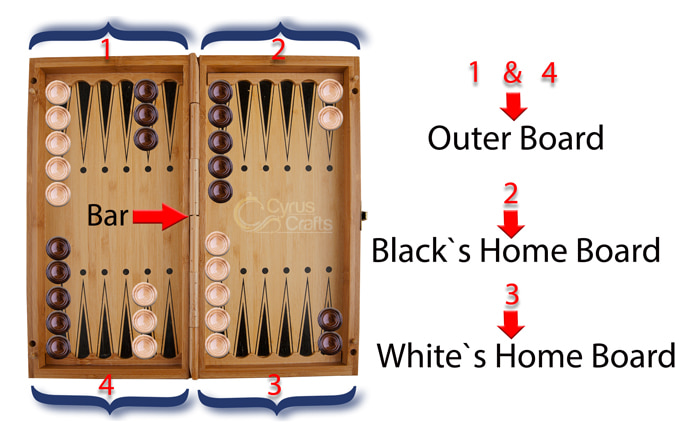
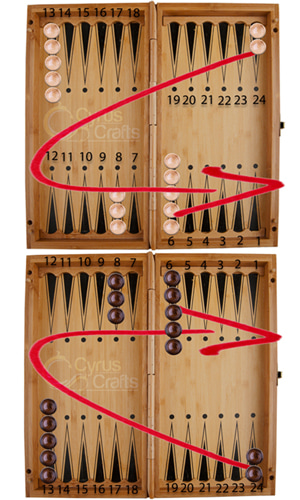
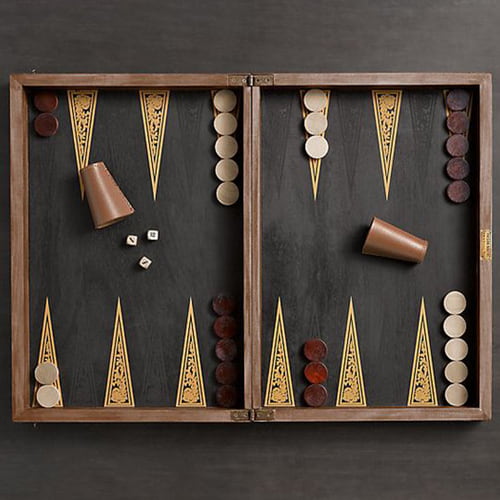
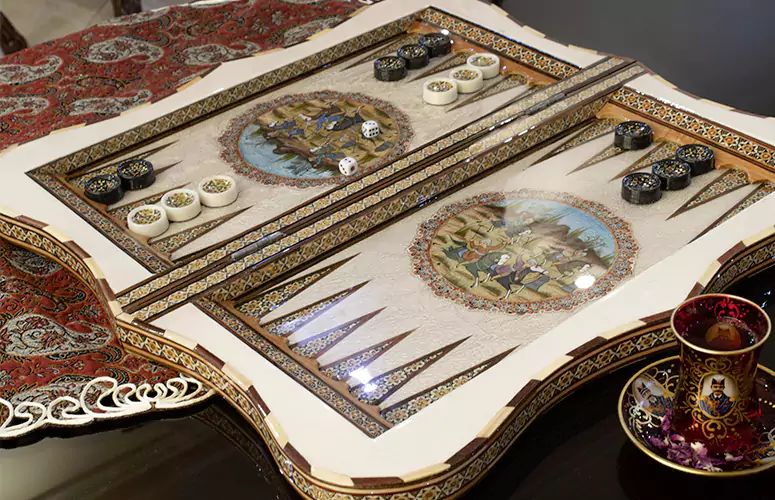
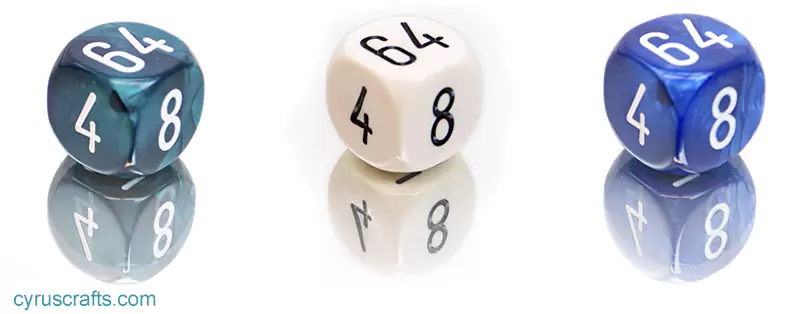
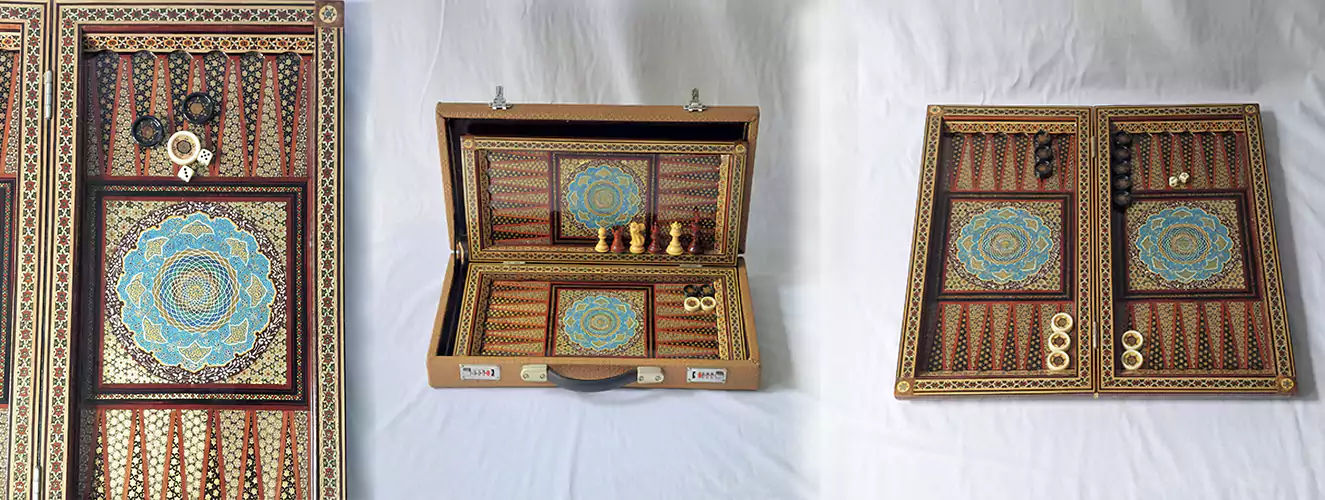






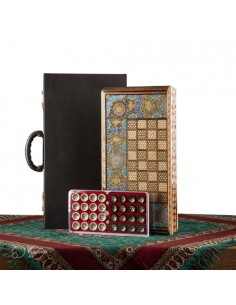

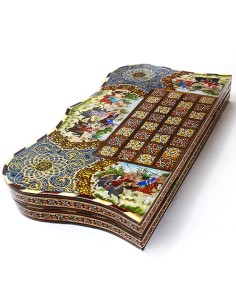

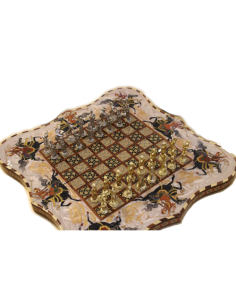

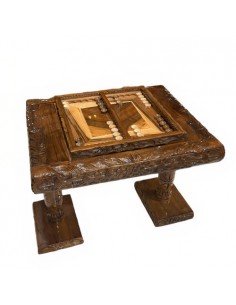

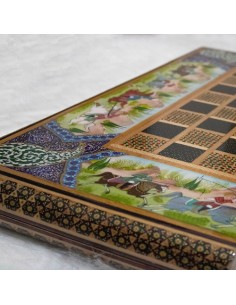

Comments (24)